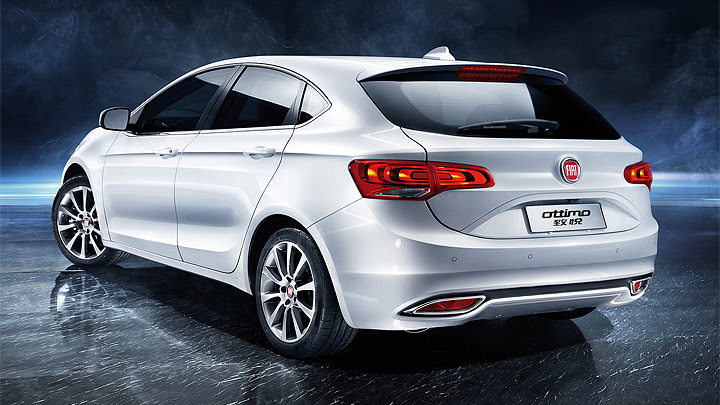
Fiat’s best moments in the recent times were around the early 1990s. Every automaker started to invest in more aerodynamic vehicles, whether using clean surfaces and smooth shapes, wedged designs or both solutions, and the Italians weren’t an exception. But this time was even better for Fiat because it started to expand its lineup in Europe. Even working with Alfa Romeo and Lancia, not to mention Ferrari and Maserati, the company was bold enough to release vehicles of categories in which it never worked before: there were the compact convertible Barchetta, Coupé, an entire mid-size lineup (Marea) with two hatchbacks (Brava and Bravo) and even a luxury sedan, Croma.
Simultaneously, the traditional models were renewed in more creative ways in order to make better competition to the contemporary rivals: Punto and Seicento replaced Uno and the second Cinquecento, while there were two new minivans: Ulysse as the big sister and the surprising Multipla. There were even more concept cars than ever, some of them realistic (like Barchetta Coupé, Punto 4x4 and Zicster) and more futuristic others (such as Bravo Windsurf, Nyce, Vuscia and even Formula 4). The problem was that these new attempts weren’t accepted as well as Fiat expected (and needed, financial-wise). Whether for being too creative, suffering internal competition or just not being attractive enough, they led Fiat into a deep financial crisis in the early 2000s.
 This is why the Torinese automaker had to slow down very abruptly in the following years, with boring-discreet models like Idea and Stilo. They didn’t become top sellers either, but helped the company to remain stable until Grande Punto arrived. This was the first pillar on which Fiat stood up to start its recovery, which was joined later by the new 500 and Panda. But at that time it already decided not to leave its fields of expertise. Such strategy is what enabled it to raise enough money to nothing less than buying the Chrysler group, in a process started some years ago. The intention was to create a double-way plan which helped Fiat by finally making its way into the US for the first time, by using the North-American company’s structure.
This is why the Torinese automaker had to slow down very abruptly in the following years, with boring-discreet models like Idea and Stilo. They didn’t become top sellers either, but helped the company to remain stable until Grande Punto arrived. This was the first pillar on which Fiat stood up to start its recovery, which was joined later by the new 500 and Panda. But at that time it already decided not to leave its fields of expertise. Such strategy is what enabled it to raise enough money to nothing less than buying the Chrysler group, in a process started some years ago. The intention was to create a double-way plan which helped Fiat by finally making its way into the US for the first time, by using the North-American company’s structure.
Since European and Brazilian divisions are already very well-established, Fiat’s next expansion attempt is China, just like many other automakers’s. Ottimo arrives as Viaggio’s hatchback sibling there, with big expectations of going to Latin America with Brazilian production soon. These two are very singular for being created in China based on the North-American Dodge Dart, which shares the Italian Alfa Romeo Giulietta’s platform. This is why the European design managed to survive until here, in fact. Fiat went somewhat further than GM with Cruze and gave the hatchback some visual tweaks in order to create a sportier personality of its own, but without getting to be a whole different car. Doors and windows, besides the entire structure, are the same.
 The biggest difference rests at the rear fascia, which represents a very attractive upgrade of what was seen at the outgoing Bravo. The overall styling is modern and very attractive, with a dosis of sportiness that even reminds of Fiat’s ‘1990s heydays. Apart from the elegantly-slanted rear, the front fascia received a whole new grille design with different chrome accents and LED daytime lights. In China, this vehicle will be produced side-by-side with Viaggio at Guangzhou-Fiat’s plant. Besides, the joint-venture is also working on a station wagon to increase the family, expected to make its first appearance next year. Who would imagine that a Chinese division could make Fiat offer a mid-size lineup as good-looking and typically Italian as Marea’s once again?
The biggest difference rests at the rear fascia, which represents a very attractive upgrade of what was seen at the outgoing Bravo. The overall styling is modern and very attractive, with a dosis of sportiness that even reminds of Fiat’s ‘1990s heydays. Apart from the elegantly-slanted rear, the front fascia received a whole new grille design with different chrome accents and LED daytime lights. In China, this vehicle will be produced side-by-side with Viaggio at Guangzhou-Fiat’s plant. Besides, the joint-venture is also working on a station wagon to increase the family, expected to make its first appearance next year. Who would imagine that a Chinese division could make Fiat offer a mid-size lineup as good-looking and typically Italian as Marea’s once again?
Entering Ottimo reveals the very same Viaggio’s cabin, which was took from Dart itself. Compared to Dodge’s, the new car’s room received an entirely different color scheme, dropping Dart’s sportiness in favor of a family-friendly look. This is why the two-tone coating is composed mostly by light colors. The equipment list must be very similar to Viaggio’s, including pretty much all the equipments seen at this category’s competitors – one of them is the large touchscreen, which in Dart uses Chrysler’s Uconnect infotainment system. Ottimo arrives in China with a four-cylinder, turbocharged 1.4L engine, offered in 121-hp and 152-hp versions and paired to five-speed transmissions whether manual or double-clutch DCT automated.